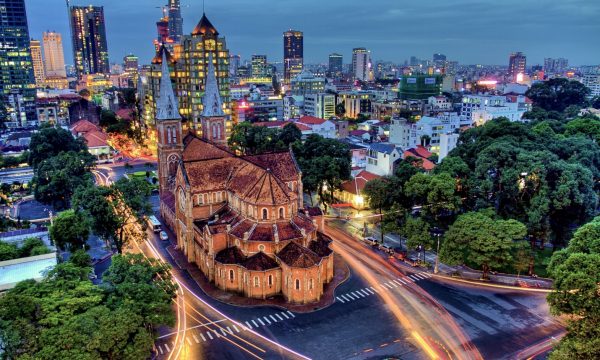HO CHI MINH CITY, 16 March 2022: Vietnam took the first official steps to reopen the country to international tourists on Tuesday, but there are still questions on the visa process. Health safety requirements remain under review.
But the government has got the ball rolling, declaring 15 March the starting post to embark on a safe reopening of inbound tourism by air, road and sea, based on recommendations made by the Ministry of Culture, Sports and Tourism,

A report posted by the Vietnam News Agency on Monday noted the tourism sector “is eager and confident to serve tourists again, building the image of Vietnam as a safe, friendly, hospitable destination for residents and visitors.”
The reopening phase should be completed by early May when the country hosts the 31st Southeast Asian Games (SEA Games 31), which will draw sports enthusiasts from the 10 ASEAN member countries.
The Vietnam National Administration of Tourism (VNAT) said that analytical data from Google Destination Insights shows that international searches for information on Vietnam’s tourism and aviation services began rising from early December.
The volume of international searches for airline travel to Vietnam remained high during January and February.
The 15 March milestone signalling the start of the reopening phase was met with optimism from the travel industry. It even claimed the country could welcome 5 million international tourists this year. The estimate is overly-optimistic as official statistics for January to February suggested only 7,358 visitors entered the country. Without clarity on the visa and health rules, most international travel arrivals will be limited to business or essential leisure travel.
The country’s travel industry is calling for the resumption of visa-free travel or an eVisa facility to be quickly reinstated, but as of 15 March, the country’s immigration website lacked any clear information.
In addition to moves to encourage domestic travel to help destinations, efforts to draw international tourists will focus on Northeast Asia, Europe, Australia, and India.
Vietnam Travel Association president Vu The Binh cited statistics from the World Tourism Organisation (UNWTO) and World Travel & Tourism Council (WTTC) that claimed favourable visa policies would help increase foreign arrivals by five to 25%
“Particularly, tourism visa exemption helps raise travelling demand by 16.6%,” the VNA report claimed.
According to the VNAT, a seminar on reopening the tourism sector will be held in Quang Ninh on 22 March to present guidelines for the tourism recovery phase.
However, Vietnam National Administration of Tourism (VNAT) chairman Nguyen Trung Khanh said the reopening to support the recovery of the tourism economy must go hand-in-hand with Covid-19 prevention controls.
While the vaccine cover in the country is high, it is still necessary to pay attention to the risk that new strains will emerge.
Khanh said VNAT has recommended to the prime minister to reintroduce a visa policy for visitors to Vietnam similar to what was active in early 2020 as it would enhance the country’s competitiveness to attract international tourists.
The VNAT confirmed a decision to continue with the “Live fully in Vietnam” communication campaign, especially on digital platforms, participate in major international tourism fairs.
In HCMC, authorities have certified 13 hotels a mix of three to five-star properties to reopen for international guests again. HCMC is one of the destinations that will figure in the pilot scheme to welcome international visitors to Vietnam.
Inbound visa and pre-booked tour services through registered travel firms will resume for tourists from 23 countries, including Australia, the US, the UK, Germany, Netherlands, France, Qatar, Japan, Korea, Canada, Italy, New Zealand, Turkey, the United Arab Emirates (UAE) and nine countries in ASEAN. This offers Vietnam’s tourism industry an ideal basis to appeal to international tourists in the near future.
Travel companies, such as Saigontourist and Vietravel report a growing interest in resuming tour group travel based on discussions with partners in Europe, Dubai, the US, Japan, and South Korea.
However, it could take up to three to six months for the reopening phase to deliver a marked uptick in international visits. Until the visa rules and health requirements are clearly identified, the reopening phase remains just a declaration of intent.
(Source: VNA, VNAT)






